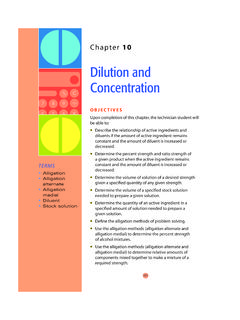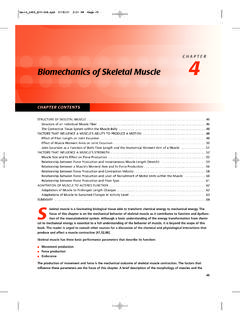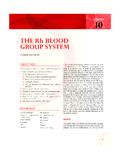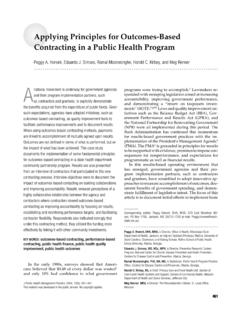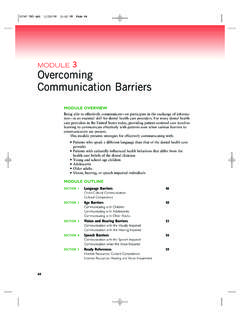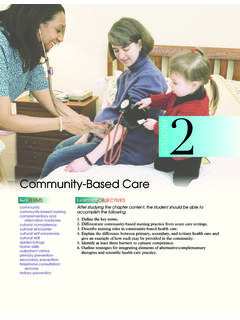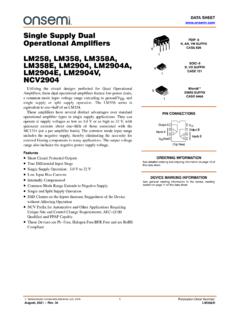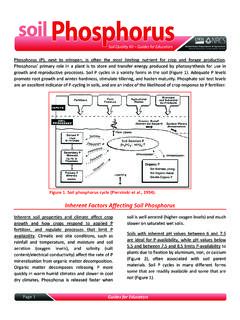Transcription of Dosage Form Design: Pharmaceutical and Formulation ...
1 CHAPTER prescribe. The general area of study concerned with the Formulation , manufacture, stability, and effectiveness of Pharmaceutical Dosage forms is termed proper design and Formulation of a Dosage form requires consideration of the physi-cal, chemical, and biologic characteristics of all of the drug substances and Pharmaceutical ingredients to be used in fabricating the prod-uct. The drug and Pharmaceutical materials must be compatible with one another to produce a drug product that is stable, effi cacious, attrac-tive, easy to administer, and safe.
2 The product should be manufactured with appropriate mea-sures of quality control and packaged in contain-ers that keep the product stable. The product should be labeled to promote correct use and be Drug substances are seldom administered alone; rather they are given as part of a Formulation in combination with one or more nonmedicinal agents that serve varied and specialized pharma-ceutical functions. Selective use of these nonme-dicinal agents, referred to as Pharmaceutical ingredients or excipients, produces Dosage forms of various types. The Pharmaceutical ingredients solubilize, suspend, thicken, dilute, emulsify, sta-bilize, preserve, color, fl avor, and fashion medici-nal agents into effi cacious and appealing Dosage forms.
3 Each type of Dosage form is unique in its physical and Pharmaceutical characteristics. These varied preparations provide the manufac-turing and compounding pharmacist with the challenges of Formulation and the physician with the choice of drug and delivery system to Dosage Form Design: Pharmaceutical and Formulation Considerations4 SECTION IIDRUG Dosage FORM AND DRUG DELIVERY SYSTEM DESIGNA fter reading this chapter, the student will be able to:1. List reasons for the incorporation of drugs into various Dosage forms2. Compare and contrast the advantages/disadvantages of various drug Dosage forms3.
4 Describe the information needed in preformulation studies to characterize a drug substance for possible inclusion into a Dosage form4. Describe the mechanisms of drug degradation and provide examples of each5. Describe the fi ve types of drug instability of concern to the practicing pharmacist6. Summarize approaches employed to stabilize drugs in Pharmaceutical Dosage forms7. Calculate rate reactions for various liquid Dosage forms8. Categorize various Pharmaceutical ingredients and 9010/22/2009 8:40:52 PM CHAPTER 4 Pharmaceutical AND Formulation CONSIDERATIONS 91325 mg of aspirin found in the common tablet?
5 Not possible. Yet compared with many other drugs, the dose of aspirin is formidable (Table ). For example, the dose of ethinyl estradiol, mg, is 1/6,500 the amount of aspirin in an aspirin tab-let. To put it another way, 6,500 ethinyl estradiol tablets, each containing mg of drug, could be made from an amount of ethinyl estradiol equal to the amount of aspirin in just one standard tablet. When the dose of the drug is minute, as with ethi-nyl estradiol, solid Dosage forms such as tablets and capsules must be prepared with fi llers or diluents so that the Dosage unit is large enough to pick up with the fi providing the mechanism for the safe and convenient delivery of accurate Dosage , dos-age forms are needed for additional reasons.
6 To protect the drug substance from the destructive infl uences of atmospheric oxygen or humidity (coated tablets, sealed ampuls)stored under conditions that contribute to maxi-mum shelf for the preparation of specifi c types of Dosage forms and drug delivery systems are described in subsequent chapters. This chapter presents some general considerations regarding physical pharmacy, drug product Formulation , and Pharmaceutical NEED FOR Dosage FORMSThe potent nature and low Dosage of most of the drugs in use today precludes any expectation that the general public could safely obtain the appro-priate dose of a drug from the bulk material.
7 Most drug substances are administered in milligram quantities, much too small to be weighed on any-thing but a sensitive prescription or electronic ana-lytical balance. For instance, how could the lay person accurately obtain from a bulk supply the TABLE SOME DRUGS WITH RELATIVELY LOW USUAL DOSESDRUGUSUAL DOSE (MG)CATEGORYB etaxolol stimulantMedroxyprogesterone steroidAlbuterol analgesicPrazosin (maintenance) , abortifacientEthinyl 9110/22/2009 8:40:54 PM92 SECTION II DRUG Dosage FORM AND DRUG DELIVERY SYSTEM DESIGN action), and the age and anticipated condition of the the medication is intended for systemic use and oral administration is desired, tablets and/or capsules are usually prepared because they are eas-ily handled by the patient and are most convenient in the self-administration of medication.
8 If a drug substance has application in an emergency in which the patient may be comatose or unable to take oral medication, an injectable form of the medication may also be prepared. Many other examples of therapeutic situations affecting Dosage form design could be cited, including motion sickness, nausea, and vomiting, for which tablets and skin patches are used for prevention and suppositories and injections for age of the intended patient also plays a role in Dosage form design. For infants and children younger than 5 years of age, pharma-ceutical liquids rather than solid forms are pre-ferred for oral administration.
9 These liquids, which are fl avored aqueous solutions, syrups, or suspensions, are usually administered directly into the infant s or child s mouth by drop, spoon, or oral dispenser (Fig. ) or incorporated into the child s food. A single liquid pediatric prepa-ration may be used for infants and children of all ages, with the dose of the drug varied by the vol-ume administered. When a young patient has a productive cough or is vomiting, gagging, or simply rebellious, there may be some question as to how much of the medicine administered is actually swallowed and how much is expecto-rated.
10 In such instances, injections may be To protect the drug substance from the destructive infl uence of gastric acid after oral administration (enteric-coated tablets)To conceal the bitter, salty, or offensive taste or odor of a drug substance (capsules, coated tablets, fl avored syrups)To provide liquid preparations of substances that are either insoluble or unstable in the desired vehicle (suspensions)To provide clear liquid Dosage forms of sub- stances (syrups, solutions)To provide rate-controlled drug action (vari- ous controlled-release tablets, capsules, and suspensions)To provide optimal drug action from topical administration sites (ointments, creams, trans-dermal patches, and ophthalmic, ear, and nasal preparations)To provide for insertion of a drug into one of the body s orifi ces (rectal or vaginal suppositories)To provide for placement of drugs directly in the bloodstream or body tissues (injections)To provide for optimal drug action through inhalation therapy (inhalants and inhalation aerosols)
